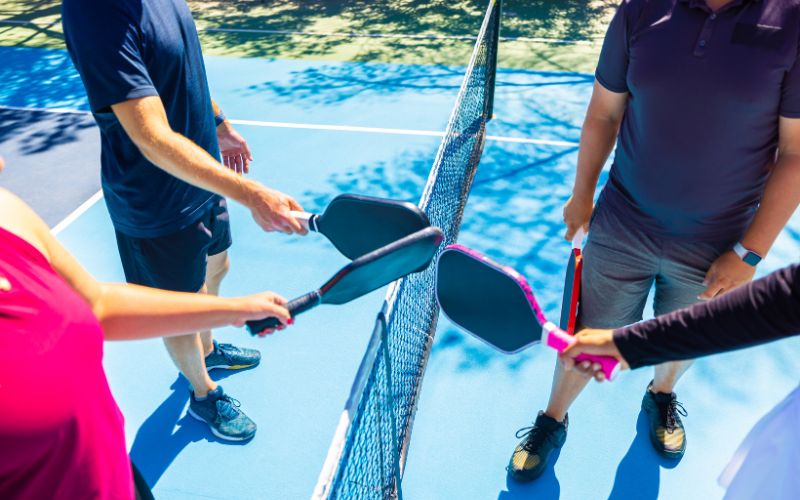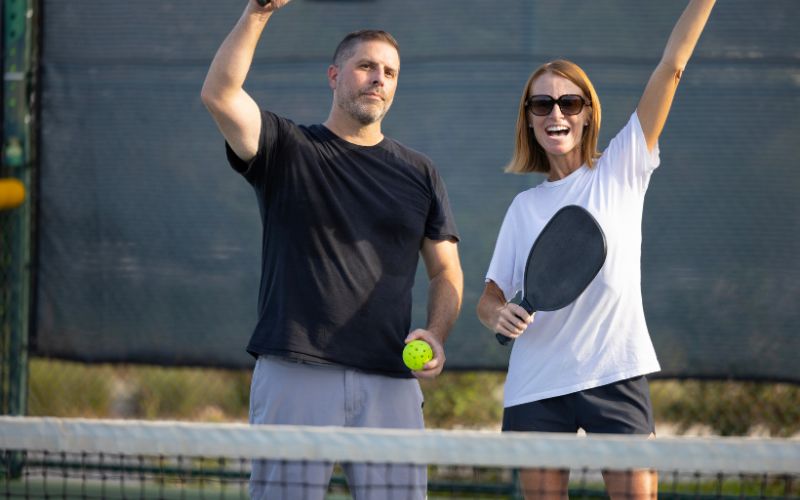Pickleball, a sport rapidly gaining popularity, combines elements of tennis, badminton, and table tennis, and is typically played in either singles or doubles format. One crucial aspect of pickleball is understanding the scoring system, particularly the starting score in a doubles game. In this guide, we delve into the specifics of pickleball scoring, focusing on the starting server’s score and its implications for players.
Basics of Pickleball Scoring
Before delving into the starting score of a doubles pickleball game, it’s essential to understand the fundamental principles of pickleball scoring. Pickleball utilizes a rally scoring system, meaning points can be scored by both the serving and receiving teams. The first team to reach a predetermined number of points wins the game. Typically, games are played to 11 points, but variations exist depending on the level of play and tournament regulations.
Pickleball Scoring System Overview
Pickleball scoring revolves around serving rotations and the accumulation of points through successful rallies. Points are scored regardless of which team serves, with each rally potentially resulting in a point for either team. The serving team alternates after each point, ensuring fairness and equal opportunities for both sides.
Traditional Starting Score
In doubles pickleball, the starting score is typically 0-0-2. This means that the serving team starts with 0 points, the receiving team also starts with 0 points, and the serving team’s first server begins on the right side of the court (odd court).
The standard starting score of 0-0-2 in doubles pickleball often confuses players, particularly beginners, despite pickleball’s straightforward rules. In doubles pickleball, the score comprises three numbers: the serving team’s score, the receiving team’s score, and the server number. Conversely, singles pickleball only includes two numbers, representing the server’s score and the receiver’s score.
In doubles pickleball, the serving team initially only has one service turn. If they lose the first rally, the serve transfers to the opposing team. Subsequently, both teams receive two service turns each. This distinctive rule aims to equalize the advantage of serving first in the game.
The rationale behind the first server exception lies in maintaining a fair balance between the serving and receiving teams throughout the game. Although the serving team has the advantage of scoring, the receiving team benefits from certain rules favoring them. For instance, the serving team must perform underhand serves, and the ball must bounce before the receiving team returns it, offering them a better chance to position themselves strategically on the court.
Ultimately, the starting score of 0-0-2 in doubles pickleball reflects the sport’s emphasis on fairness and balance between the serving and receiving teams, ensuring an equitable playing field for all participants.
Serving Rotation and Sequence
The serving team begins the game with the first server positioned on the right service court (odd court). The serving team’s second server stands on the left service court (even court). The serving rotation progresses in a proper sequence, with each player taking turns to serve based on the serving rotation.
First Serve and Scoring Points
The first server initiates the game by serving the pickleball from the right service court diagonally to the opponent’s service court. Points are scored when the serving team wins a rally, regardless of whether they served first or second. The scoring system continues until one team reaches the predetermined number of points to win the game.
Importance of Understanding Starting Score
Understanding the starting score in a doubles pickleball game is essential for players to commence the game correctly and maintain the proper sequence of serving rotation. It ensures fairness and adherence to pickleball rules, promoting a smooth and enjoyable playing experience for all participants.
Maintaining the proper sequence of serving rotation and adhering to scoring rules is crucial to avoid confusion and ensure the integrity of the game. Players must be aware of their serving position and the corresponding score to prevent errors and maintain the flow of the game.
Doubles Pickleball Scoring Rules
In doubles pickleball, points can only be earned when serving; the receiving side cannot gain points. At the onset of the match, the player positioned on the right side, known as the even court, serves diagonally to the opposite pickleball court. If a point is secured, the server shifts to the left side, or the odd court, and serves to the diagonally opposite court. This pattern continues, with players on the serving side alternating from right to left or left to right each time a point is scored. Unlike the serving team, players on the receiving side do not swap sides during the game.
The initial server continues serving until their team loses a rally due to a fault, at which point the serve transitions to the second server on the team. This process continues throughout the match. Scoring should be communicated using three numbers: the server’s score, the receiver’s score, and, exclusively for doubles, the server number, denoted as 1 or 2.
To initiate a match, the score is announced as “zero – zero – two.” The server number applies only to the current service turn. The player on the right side when the team regains the serve becomes the first server for that particular service turn. This player may change depending on the next service turn.
The “First Server Exception” aims to mitigate the advantage of serving first. During the first service turn of the game, only the player on the right side serves. When this player loses the serve, they become the second server. Therefore, at the beginning of the game, the score is announced as “0-0-2.” The “2” signifies the second server and indicates that the serve transfers to the other side when lost.
When a team’s score is even, the player who initially served in that game should be on the right side of the court, and on the left when the score is odd. In other words, if the first server of that game is on the right side, the team’s score should be even. Incorrect positioning or scoring announcements may lead to confusion or inaccuracies during play.
Conclusion
In conclusion, the starting score in pickleball doubles sets the stage for an exciting and competitive match. Understanding the traditional starting score, serving rotation, and scoring rules is vital for players to begin the game correctly and navigate through rallies effectively. By adhering to the proper sequence and scoring system, players can enjoy a rewarding pickleball experience while honing their skills on the court.
Frequently Asked Questions (FAQs) about the Starting Score of a Doubles Pickleball Game
What is the typical starting score of a doubles pickleball game?
The standard starting score for a doubles pickleball game is 0-0-2. This means that the serving team begins with 0 points, the receiving team also starts with 0 points, and the serving team’s first server initiates the game from the right side of the court (odd court).
Why does a doubles pickleball game start with a score of 0-0-2?
The starting score of 0-0-2 is designed to minimize the advantage of the serving team by ensuring fairness and balance between the serving and receiving teams. This rule helps maintain equilibrium throughout the game.
How does the scoring system work in a doubles pickleball game?
Points in doubles pickleball games are scored only on the serve, and the receiving side cannot score points. The serving team starts with the first server on the right side, and if they win a point, the serve transfers to the left side. Scoring is called out as three numbers representing the server’s score, the receiver’s score, and the server number (1 or 2).
What happens if the serving team loses a rally in a doubles pickleball game?
If the serving team loses a rally due to a fault, the serve passes to the opposing team, and the second server on the serving team becomes the first server. This rotation continues throughout the match, ensuring equal opportunities for both teams to serve.
Why is it important to understand the starting score of a doubles pickleball game?
Understanding the starting score is crucial for players to commence the game correctly and maintain the proper sequence of serving rotation. It ensures adherence to pickleball rules, promotes fairness, and enhances the overall playing experience for all participants.






